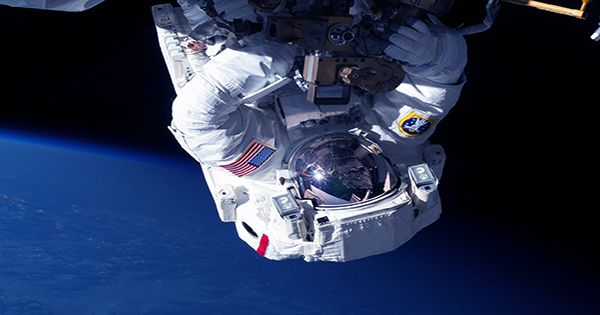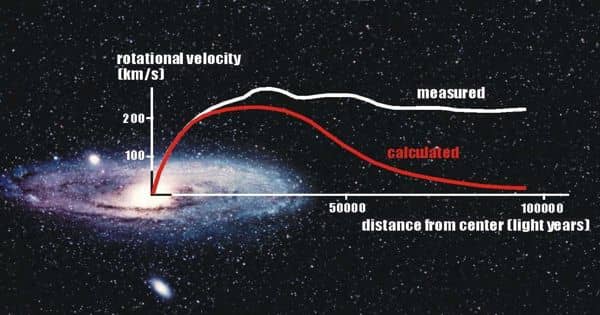Although space appears to be empty, it is actually a dynamic environment populated by near-invisible matter and dominated by forces, particularly magnetic fields. Magnetospheres are magnetic fields that exist around most planets in our solar system.
They deflect cosmic rays, which are high-energy charged particles ejected from the Sun or from interstellar space. They happen to protect the planets’ surfaces from this dangerous radiation, together with their atmospheres.
However, not all magnetospheres are made equal: Venus and Mars lack magnetospheres entirely, whereas the other planets and one moon have magnetospheres that are remarkably varied.
NASA has undertaken a slew of missions to explore the planets in our solar system, many of which have returned vital magnetosphere data. As they sailed to the furthest limits of the solar system, the twin Voyagers analyzed magnetic fields and discovered Uranus and Neptune’s magnetospheres.
Other planetary missions, including as Galileo, Cassini, and Juno, as well as a number of Earth-orbiting spacecraft, give observations to help scientists better understand how planets produce magnetospheres and how they interact with the dynamic space environment surrounding them.
Earth
The magnetosphere of Earth is formed by the continual movement of molten metal within the planet. Our planet’s invisible “force field” bears the approximate shape of an ice cream cone, with a rounded front and a long, trailing tail that faces away from the sun. Because of the near-constant flow of solar wind and magnetic field from the Sun-facing side, the magnetosphere is structured in this way.
Charged particles are deflected away from the globe by Earth’s and other magnetospheres, but energetic particles are trapped in radiation belts. Particles pour down into the atmosphere, usually not far from the magnetic poles, causing auroras.
It’s probable that Earth’s magnetosphere was crucial in the evolution of life-friendly conditions, so learning about magnetospheres on other planets and moons is a huge step toward figuring out if life could have evolved there as well.
Mercury
Mercury’s magnetic field is only around 1% as powerful as Earth’s, despite its massive iron-rich core. The planet’s magnetosphere is assumed to be crushed by the powerful solar wind, restricting its size. From 2011 to 2015, the MESSENGER spacecraft orbited Mercury, aiding our understanding of our small planetary neighbor.
Jupiter
Jupiter, after the Sun, has by far the strongest and largest magnetic field in our solar system, stretching over 15 times the breadth of the Sun from east to west. Jupiter’s magnetic field is formed by a compressed liquid metallic hydrogen core, rather than molten metalcore.
Io, one of Jupiter’s moons, has an active volcanic activity that spews particles into the magnetosphere of Jupiter. Around Jupiter, these particles produce powerful radiation belts and auroras.
Ganymede, Jupiter’s largest moon, is the only moon that has its own magnetic field and magnetosphere. The planet’s magnetic field is barely ruffled by its weak field, which is nestled in Jupiter’s enormous shell.
Saturn
Saturn’s massive ring system alters the magnetosphere’s shape. This is because particles are funneled into space around the planet by oxygen and water molecules evaporating from the rings.
Some of Saturn’s moons assist trap these particles, pulling them out of the magnetosphere, albeit moons like Enceladus, which have active volcanic geysers, spit out more material than they take in. Between 2004 and 2017, NASA’s Cassini mission followed in the footsteps of the Voyagers, studying Saturn’s magnetic field from orbit around the ringed planet.
Uranus
The magnetosphere of Uranus was discovered in 1986 when data from Voyager 2’s flyby revealed weak, variable radio emissions, which were confirmed when Voyager 2 directly measured the magnetic field. The magnetic field and rotation axis of Uranus are 59 degrees out of alignment, whereas the magnetic field and rotation axis of Earth are nearly aligned.
Furthermore, because the magnetic field does not pass through the planet’s center, the strength of the field varies greatly across the surface. Uranus’ magnetotail, the component of the magnetosphere that trails behind the planet and away from the Sun, is twisted into a long corkscrew as a result of this misalignment.
Neptune
In 1989, Voyager 2 paid a visit to Neptune. Its magnetosphere is only 47 degrees away from its rotation axis. Neptune’s magnetic field strength changes around the planet, similar to Uranus. This means that auroras can be seen all around the planet, rather than just near the poles like they are on Earth, Jupiter, and Saturn.
And beyond
Auroras, which suggest the presence of a magnetosphere, have been observed on brown dwarfs, which are larger than planets but smaller than stars, outside of our solar system. There are also indications that some massive exoplanets have magnetospheres, although we haven’t seen definitive proof of this yet.
Scientists are learning more about the magnetospheres of planets in our solar system, which may one day aid in the identification of magnetospheres around more distant worlds.
















